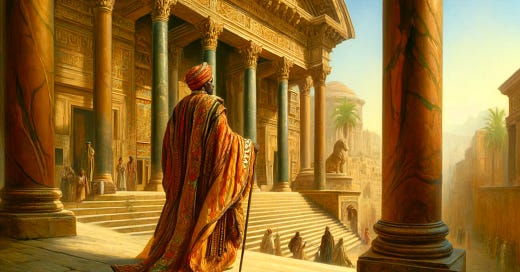Carthage the African Super city the Roman's destroyed
They were so great the Roman's tried to wipe out their existence !
Carthage, an ancient African city-state located in modern-day Tunisia, was a dominant force in the Mediterranean from its founding in 814 B.C. until its fall in 146 B.C. At its peak, Carthage was the largest, wealthiest, and most powerful political entity in the region. Its wealth was bolstered by tribute, tariffs, and a thriving maritime trade network. Carthage's strategic harbors and formidable navy enabled it to expand its influence and secure new territories, making it a crucial player in Mediterranean geopolitics. This essay explores the rise and significance of Carthage, highlighting its economic prowess, diverse population, and the legacy of its most famous military leader, Hannibal.
Economic Prowess
Carthage's immense wealth was primarily derived from its control of maritime trade routes and the strategic imposition of tribute and tariffs. The city's harbors were a testament to its economic might, featuring 220 docks and sophisticated infrastructure to support both commercial and military fleets. The two harbors served distinct purposes: one for trade and the other for warships. This dual harbor system allowed Carthage to efficiently manage its maritime activities, ensuring that its trading ships could safely navigate the Mediterranean while its navy protected its interests and expanded its reach. The bustling docks were a hub of activity, facilitating the flow of goods, resources, and cultural exchanges across the region.
Diverse Population
The population of Carthage was incredibly diverse, a reflection of its Phoenician heritage and extensive trade networks. As descendants of the Phoenicians, Carthaginians included people from various cultures and backgrounds around the Mediterranean, creating a melting pot of ethnicities. This diversity extended to the African presence within the city, with significant representation from black or Ethiopian communities. The famed 18th-century German geographer and ethnographer Friedrich Ratzel noted the strong Ethiopian element in the population, emphasizing the mixed heritage of the Semitic and Hamitic peoples of North Africa. This diversity contributed to the rich cultural tapestry of Carthage and played a role in its dynamic society.
Hannibal and the Punic Wars
Hannibal, one of Carthage's most renowned figures, was a black military general who left an indelible mark on history through his campaigns against Rome during the Punic Wars. Hannibal's strategic brilliance and relentless determination were crucial in challenging the might of the Roman army. His daring crossing of the Alps with a diverse army, including black soldiers, stands as one of the most remarkable military feats of antiquity. Hannibal's efforts were commemorated on several coins from the era, depicting his distinct negroid features. Despite his successes on the battlefield, the prolonged conflict with Rome ultimately led to Carthage's downfall, culminating in its destruction in 146 B.C. during the Third Punic War.
Conclusion
Carthage's legacy as a powerful and affluent city-state in the ancient Mediterranean is a testament to its economic acumen, diverse population, and formidable military leadership. The city's strategic control of trade routes and impressive naval capabilities facilitated its rise to prominence, while its multicultural society enriched its cultural and social fabric. Hannibal's role in the Punic Wars underscores the city's military prowess and the significant contributions of its African heritage. Although Carthage ultimately fell to Rome, its influence and achievements continue to be remembered and celebrated as a pivotal chapter in the history of the ancient world.
Voice of the Ancestors Book series 






